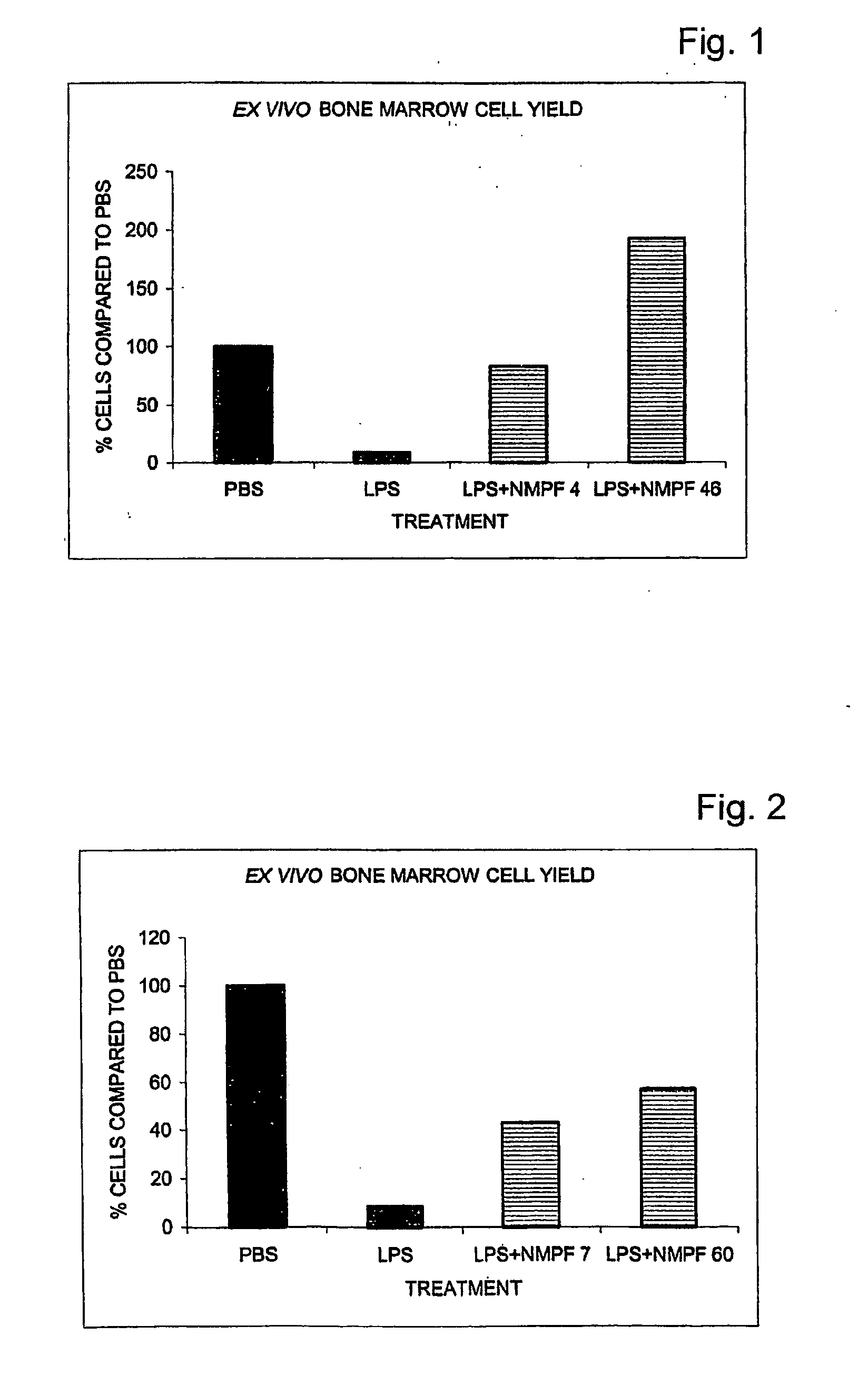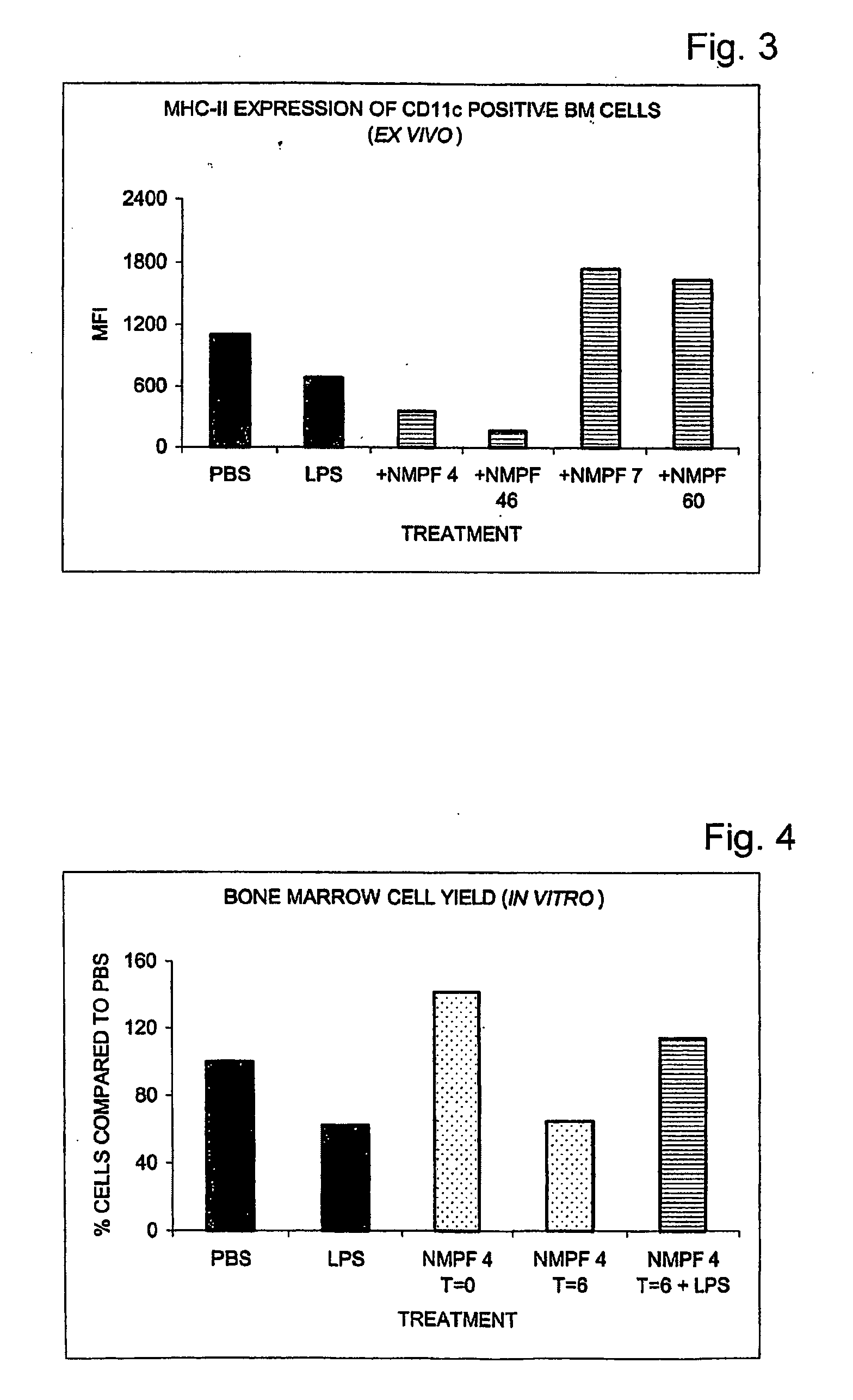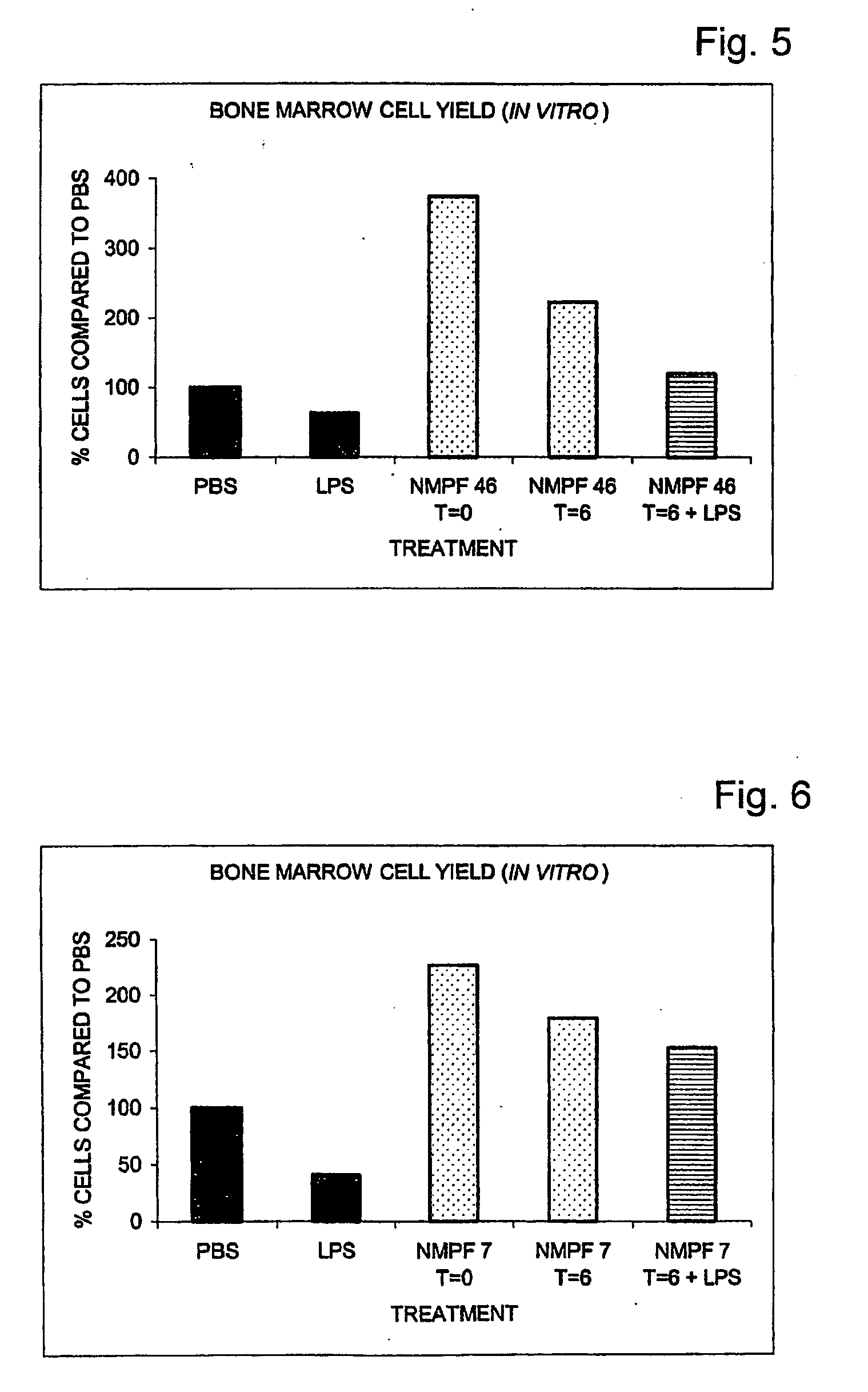[0035] Synthetic peptides can be obtained using various procedures known in the art. These include
solid phase
peptide synthesis (SPPS) and
solution phase organic synthesis (SPOS) technologies. SPPS is a quick and easy approach to synthesize peptides and small proteins. The C-terminal
amino acid is typically attached to a cross-linked
polystyrene resin via an
acid labile bond with a
linker molecule. This resin is insoluble in the solvents used for synthesis, making it relatively simple and fast to wash away excess reagents and by-products.
[0037] An important link in any
polypeptide chain is the
amide bond, which is formed by the condensation of an amine group of one
amino acid and a carboxyl group of another. The replacement of key
amide bonds in peptide fragments by isosteric groups has recently received considerable attention as a possible means of generating novel bio-active substances with improved stability. In one embodiment of the invention, a lead peptide comprises a synthetic molecule in which at least one amide bond has been replaced by an isosteric group such as a ketomethylene or a trans-
alkene group. Classically, well-defined molecules were systematically modified and the product compounds analyzed for improved
biological activity. Newer
combinatorial chemistry methods allow the synthesis of a
large population of similar compounds. This is generally followed by the selection, or screening, of peptides for
biological activity such as the capacity to regulate
gene expression. In one embodiment of the invention, lead peptides are synthesized in a random fashion using a
combinatorial chemistry approach.
Combinatorial chemistry, combined with recent advances in robotic screening, enables the testing of a large number of compounds in a short period of time. This technique involves the preparation of a large number of structurally related compounds either as mixtures in the same reaction vessel or individually by parallel synthesis. In this manner, large pools of similar compounds can be synthesized within a short period of time. Combinatorial libraries can be prepared using both
solution chemistry and by
solid phase synthesis; however,
solid phase synthesis allows the use of excess reagents to drive the reaction to completion and easy removal of the reagents and side-products by simple
filtration of the polymeric support and washing with
solvent. Therefore,
solid phase synthesis offers a more attractive approach to the generation of chemical libraries for screening purposes.
[0038]
Combinatorial chemistry is well suited to peptides. Lead peptide libraries can be easily synthesized using solid-phase
chemistry. Sequence degeneracy can be incorporated during the synthesis using either split synthesis or parallel synthesis. In the split synthesis approach, the solid support is divided into portions prior to each
coupling step. A different molecular unit (
synthon), like an
amino acid, is then coupled to each portion. All portions are recombined after
coupling and the synthesis cycle is completed. This “split and mix” approach has the
advantage of yielding a unique sequence on each support bead and variability in
synthon reactivity can be corrected by varying the
coupling conditions.
Peptide synthesis, where variations in reactivity between amino acids are significant, requires the “split and mix” approach. Head-to-
tail cyclization of peptides on the resin provides a facile
route to cyclic compounds. In addition to general advantages of
solid phase synthesis, such as high efficiency and easy purification, head-to-
tail cyclization of peptides on
polymer supports provides
minimal risk of intermolecular reactions (e.g., dimerization and oligomerization), even under
high concentration. This is another
advantage over
solution chemistry which requires high
dilution conditions to avoid intermolecular side reactions of the linear peptide.
[0048]
Reporter gene assays allow analysis of a large number of different samples in a relatively short time. It can easily be performed using multiwell plates such as 96-well plates. The activity of many reporter genes can be assayed using colorimetric or
fluorescence detection in, for example, an automated
plate reader. Thus, a
reporter gene assay can be used in a high-
throughput format. This is especially advantageous when performing several rounds in screening for gene regulatory effects of a peptide, for example, in the process of lead peptide optimalization. In these types of assays, it is preferred to focus on a small number of different promotor elements. For example, cells can be transfected with a
reporter gene construct for the detection of NFkappaB activity, or with a
reporter gene construct for AP-1 activity or with a reporter construct designed to readily determine
NFAT-1 activity. Cells can be transfected in parallel with one reporter gene construct but it is also possible to provide a cell with more than one reporter gene construct. Of course, to allow discrimination between activities of the different promoters, it is preferred that each promotor construct contains a different reporter gene. In one embodiment of the invention, a cell is provided with more than one reporter gene construct to determine the effect of a peptide or a derivative or analogue thereof on
transcriptional activity. For example, a cell is cotransfected with two or even three different plasmids, each containing a distinct
fluorescent reporter gene fused downstream of a distinct promotor of interest. From this, the effect of the peptide on each promotor is determined. In such an experimental setup, it is obviously preferred that reporter gene products of the cotransfected reporter constructs are easily distinguished from each other. Interesting reporter genes that can be used in cotransfection reporter gene assays include GFP or EGFP (enhanced green
fluorescence protein) and spectral variants thereof, such as RFP, YFP and CFP. Following
exposure of the cell to a peptide according to the invention, the activities of each
fluorescent reporter gene is measured by
fluorescence detection using a suitable
optical filter set, like a multi-band filter set. Multi-band sets are used for multiple labeling and simultaneous viewing of multiple fluorophores. Each set of exciters, dichroics, and emitters yields isolated bands of excitation and emission energy.
[0050] Using a method for identifying or obtaining a signaling molecule comprising a peptide or
functional derivative or analogue thereof capable of modulating expression of a gene in a cell comprising providing the cell with a peptide or derivative or analogue thereof and determining the activity and / or
nuclear translocation of a gene
transcription factor as provided herein furthermore allows, at random, testing of a multiplicity of oligo- or lead peptides, leading to automated
combinatorial chemistry formats, wherein a great many of candidate
signal molecules are being tested in a (if so desired, at random) pattern for their reactivity with a molecular
library of synthetic peptides representing potential
signal molecules allowing the
rapid detection of particularly relevant molecules out of tens of thousands of (combinations of) molecules tested. In a preferred embodiment, the invention provides a method wherein the lead peptides, or at least their activities, are positionally or spatially addressable, e.g., in an array fashion, if desired aided by computer directed localization. In an array, the pluralities are, for example, addressable by their positions in a grid or matrix.
 Login to View More
Login to View More 


